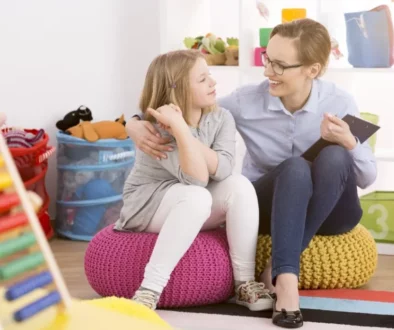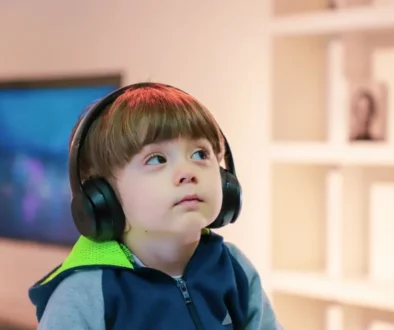BPD vs. Autism and 5 Key Differences Explained
Contents
- 1. Emotional Responses: The Key Difference in Regulation
- 2. Sense of Identity: Stability vs. Uncertainty
- 3. Relationship Patterns: Navigating Attachment Styles
- 4. Impulsivity: Emotional Reactions vs. Sensory Responses
- 5. Developmental Timeline: Early Signs vs. Emerging Symptoms
- FAQ about Autism and BPD for Parents:
- Understanding to Empower
What Parents Need to Know to Understand the Difference Between BPD and Autism
When understanding Borderline Personality Disorder (BPD) and Autism Spectrum Disorder (ASD), many parents can feel overwhelmed by their similarities. However, learning the key differences is crucial to providing the right care. Equipped with this information, you can feel empowered to support your child confidently. Below, we’ll break down five key differences and provide practical tips that parents can immediately apply in everyday life.
1. Emotional Responses: The Key Difference in Regulation
One of the starkest differences between BPD and autism lies in how individuals experience and respond to emotions. People with BPD often have intense, unpredictable emotional reactions that can be triggered by relationship issues or feelings of rejection. Minor disagreements may result in extreme emotional responses, such as sadness, anger, or anxiety. This emotional volatility can be challenging for both the individual and their loved ones, often creating instability in relationships.
On the other hand, individuals with autism often struggle to recognize or express emotions but don’t typically experience the same degree of emotional intensity. They may seem detached or struggle with social-emotional cues, leading to misunderstandings. For instance, your child might not express joy or frustration in a typical way and may have difficulty understanding others’ emotional states. Sensory overload can also lead to emotional outbursts, but these are often tied to overstimulation rather than relational issues.
Parent Tip:
For parents of children with autism, creating a calm, predictable environment can help reduce sensory overload and emotional outbursts. Consider using sensory tools like fidget toys, weighted blankets, or noise-canceling headphones to help your child self-regulate in overwhelming situations.
2. Sense of Identity: Stability vs. Uncertainty
A fragile sense of identity is a hallmark of BPD. Individuals with this disorder often struggle with knowing who they are and may frequently change their interests, values, or appearance in response to their surroundings. This can lead to a deep sense of emptiness and a constant search for external validation.
In contrast, individuals with autism usually have a more stable identity, though their interests and routines may seem unconventional. Children with autism often develop intense focus on particular hobbies or activities that bring them comfort and predictability. While they may struggle with understanding social roles, their personal interests often remain consistent.
Parent Tip:
Encourage your child’s special interests and routines, as these can provide them with a sense of security. Help them structure their day around these interests, but also introduce variety gently to expand their comfort zone without overwhelming them.
Need clarity about BPD or autism in your child? Reach out to us today. We’re here to help you make sense of what’s happening, so you can move forward with confidence in caring for your child.
Relationships in BPD are typically characterized by intense fear of abandonment and unstable attachment. Individuals may idealize someone one moment and then devalue them the next, creating a turbulent cycle. These relationship patterns can be emotionally draining for both the individual and those around them.
For individuals with autism, the challenge lies more in understanding social norms and communication cues. Rather than fearing abandonment, they may struggle to read facial expressions, interpret body language, or grasp tone of voice, which can make social interactions exhausting or confusing. Structured and predictable social interactions are often more comfortable for children with autism.
Parent Tip:
Practice social situations with your child at home. Role-play conversations and teach them to recognize facial expressions or tone of voice. Social stories, which outline specific scenarios like introducing oneself or making a friend, can also help your child understand social expectations.
4. Impulsivity: Emotional Reactions vs. Sensory Responses
Impulsivity presents in both conditions but for different reasons. In BPD, impulsivity often stems from emotional distress. This may manifest as reckless behavior—such as binge eating, substance abuse, or impulsive spending—as a way to cope with emotional pain or feelings of abandonment.
In autism, impulsive behaviors are usually tied to sensory sensitivities or difficulty understanding social rules. For example, a child with autism might interrupt conversations or engage in repetitive behaviors like hand-flapping to cope with overwhelming sensory input. These behaviors, known as “stimming,” are a way for them to self-regulate.
Parent Tip:
When you notice impulsive behavior in your child with autism, take note of their environment. Is there sensory overload or a lack of structure? Introducing sensory breaks or tools, such as calming activities or designated quiet spaces, can help your child feel more in control.
5. Developmental Timeline: Early Signs vs. Emerging Symptoms
Another key distinction is when symptoms first appear. BPD generally manifests in late adolescence or early adulthood, often following a history of unstable relationships or trauma. Because BPD requires a more mature sense of self for diagnosis, it’s rare to diagnose children with this disorder.
Autism, on the other hand, is a developmental disorder that typically becomes apparent in early childhood. Early signs might include delayed speech, lack of eye contact, and sensitivity to sensory stimuli. The earlier autism is identified, the better, as early intervention therapies can greatly improve communication and social skills.
Parent Tip:
If you notice early signs of autism—such as delayed speech or repetitive behaviors—don’t hesitate to seek a professional evaluation. Early intervention services like speech therapy, occupational therapy, and ABA (Applied Behavior Analysis) therapy can make a significant difference in your child’s developmental trajectory.
FAQ about Autism and BPD for Parents:
Q: What are early signs of autism in toddlers?
A: Common early signs include delayed speech, difficulty with social interaction, and repetitive behaviors such as lining up toys.
Q: Can BPD be diagnosed in children?
A: BPD is rarely diagnosed before late adolescence, as it requires a developed personality for accurate assessment. Symptoms often emerge in the late teens or early adulthood.
Q: Can a child have both BPD and autism?
A: While rare, it is possible to have both. BPD tends to be diagnosed later, whereas autism is typically recognized in early childhood. Consulting specialists ensure the right diagnosis and treatment.
A: Create structured, predictable environments and practice social skills in smaller, less overwhelming settings. Gradually exposing your child to social situations while providing sensory accommodations like headphones can also help.
Q: What therapies are recommended for children with autism?
A: Early intervention is key. Behavioral therapies like ABA, along with speech and occupational therapy, are often highly beneficial for children with autism, helping them develop communication, social, and daily living skills.
Understanding to Empower
Knowing the differences between BPD and autism empowers parents to take action and seek the best support for their child. Whether it’s emotional regulation strategies for BPD or sensory support for autism, the right approach can help your child thrive. Remember, early intervention and understanding go a long way in helping your child live a fulfilling life, and with the right resources, you can approach every day with confidence and joy.
Links and Resources for BPD v Autism
Autism vs BPD: Understanding the Symptoms and Treatments
URL: https://www.crossrivertherapy.com/autism/autism-vs-bpd
Autism vs. Borderline Personality Disorder: Understanding the Differences
URL: https://www.thetreetop.com/aba-therapy/autism-vs-bpd
Autism vs BPD: Key Differences You Should Know
URL: https://www.abtaba.com/blog/autism-vs-bpd
Comparing Autism and Borderline Personality Disorder in ABA Therapy
URL: https://www.supportivecareaba.com/aba-therapy/autism-vs-bpd
Autism vs BPD: A Comprehensive Comparison
URL: https://www.totalcareaba.com/autism/autism-vs-bpd
Borderline Personality Disorder and Autism: Are They Related?
URL: https://www.autismparentingmagazine.com/borderline-personality-disorder/
Exploring the Link Between Borderline Personality Disorder and Autism
URL: https://www.autismparentingmagazine.com/borderline-personality-disorder
BPD and Autism: How These Disorders Differ and Overlap
URL: https://www.autismspeaks.org/blog/bpd-and-autism



